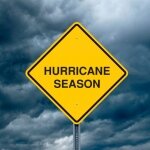
On April 25, 2015, a magnitude 7.8 earthquake struck southeast of Lamjung, Nepal. It has been described as the most powerful disaster to strike Nepal since the Nepal-Bihar earthquake of 1934. Before the end of the day, staggering statistics and graphic images and video had been released across multiple global media platforms. The Earthquake was covered on network news stations and headlined online news sites. Social media response was swift with donation sites and ‘people tracking’ apps quickly being added to help connect donors with associations and loved ones with friends and family overseas. In this modern age of instant communication, a support system has already been put in place and is being utilized to bring reports and updates directly into millions of homes every hour. Natural disasters (and terror attacks) elicits strong emotional responses and are therefore, deserving of comprehensive, continual, and, eventually, repetitive media coverage.
While family, friends, and relief sponsors desperately need this information for their mental health, other people may be best served by avoiding some of these reports. Survivors of past traumatic events, such as the Asian Tsunami of 2004, The Haiti Earthquake of 2010, or the Arkansas Tornado in 2014, who have suffered natural disaster based trauma, may be more inclined to suffer the effects of secondary trauma from the current news reports. Secondary trauma, or vicarious trauma, is the emotional duress that results when an individual hears about the firsthand trauma experiences of another or is indirectly exposed. Secondary trauma can occur from watching videos, news reports, viewing photos, or even from hearing graphic accounts of traumatic or violent events. Those who have been exposed to strong past trauma are more vulnerable due to emotional susceptibility or unresolved emotional issues related to past events such as depression and anxiety. Those who have never been exposed to similar trauma may still be susceptible as a consequence of the stress resulting from empathy or even an extreme desire to help.

Symptoms and conditions associated with secondary trauma are similar to the symptoms of post-traumatic stress disorder. These include: hyper vigilance, hopelessness, sleeplessness, chronic exhaustion, anxiety, guilt, social withdrawal, anger, bereavement, and severe depression. These symptoms might not be immediately present. Generally speaking, they will present over the course of four weeks after the traumatizing event. You may not immediately recognize the symptoms before coping strategies evolve. Coping strategies can involve eating disorders, self-injurious behavior, substance abuse or chemical dependency.
If you are experiencing these symptoms or coping strategies, you may need to seek treatment or help with emotional regulation. You may need to decrease your personal level of connectivity to reduce additional exposure. Avoid additional news coverage. Consider using less social media (unless you are involved with a social media support group). If professional help is needed, get help. Treatment options do exist and include psychotherapy, cognitive behavior therapy, counseling, and support groups in both residential treatment facilities and outpatient treatment centers.
Most importantly, make sure you take care of yourself and your mental health. Natural disasters are, by definition, catastrophic events. The earthquake has already cause extensive damage and loss of life. Don’t let your family become secondary victims.
























































